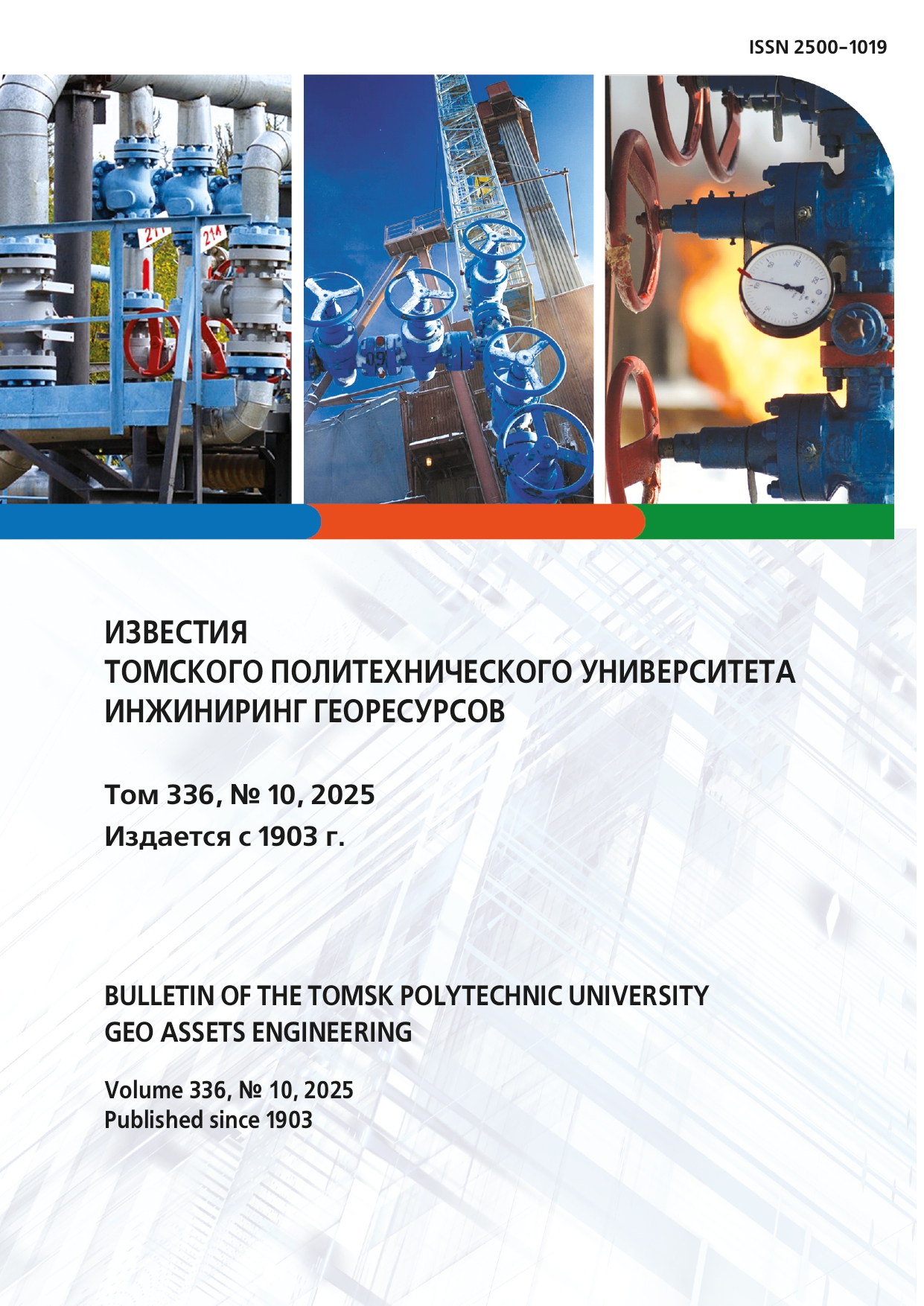Том 331 № 12 (2020)
DOI https://doi.org/10.18799/24131830/2020/12/2941
УЧЕТ ИЗМЕНЕНИЯ ЗАКОНА ФИЛЬТРАЦИИ ПРИ РАСЧЕТЕ ДЕБИТА ГАЗОВОЙ СКВАЖИНЫ
Актуальность. В настоящее времядля расчета дебита вертикальной газовой скважины применяется трехчленная формула, которая не учитывает тот факт, что вокруг вертикальной газовой скважины при промышленных дебитах существуют одновременно две зоны, в каждой из которых свой закон фильтрации. Размеры этих зон зависят как от фильтрационных параметров пласта, так и от рабочей депрессии на пласт. Цель: определение зависимости дебита вертикальной газовой скважины от депрессии на пласт и фильтрационных параметров пласта с учетом размеровзон линейной и нелинейной фильтрации Объекты: газовый пласт и несовершенная газовая скважина, линейный и нелинейный законы фильтрации газа. Методы: аналитические методы подземной гидрогазодинамики. Результаты. Для расчета дебита вертикальной газовой скважины в настоящее время используется известная трехчленная формула. Из данной формулы следует, что фильтрация газа происходит по нелинейному закону во всей области фильтрации от скважины до контура питания. В реальности же нелинейный закон фильтрации присутствует лишь в ограниченной зоне вокруг скважины. Не учет этого явления может приводить к увеличенной погрешности в расчетах фильтрационных коэффициентов, дебитов скважин и их продуктивности. Размер этой зоны зависит от дебита скважины, фильтрационных параметров пласта, свойств газа и т.д. С использованием аналитических методов подземной гидрогазодинамики получены формулы и алгоритм расчетов дебита газовой скважины, а также фильтрационных коэффициентов, учитывающих размер зоны нелинейной фильтрации. Радиус зоны нелинейной фильтрации находится из полученного уравнения с учетом значения критической скорости фильтрации, определяемой фильтрационными параметрами пласта. Получены выражения для фильтрационных коэффициентов трехчленной формулы притока газа к скважине. Произведен расчет дебитов газовой скважины по полученной формуле для различных значений рабочей депрессии на пласт. Различия в результатах расчетов дебитов скважины, вычисленных по традиционной и полученной формуле, уменьшаются с ростом депрессии по причине увеличения размеров зоны нелинейной фильтрации. Построены индикаторные диаграммы по полученной и традиционной формулам. По сравнению с традиционной трехчленной формулой изменяются выражения для фильтрационных коэффициентов A и B, которые теперь также зависят от размеров зоны нелинейной фильтрации.
Ключевые слова:
Вертикальная газовая скважина, дебит, трехчленная формула, фильтрационные коэффициенты, линейный и нелинейный законы фильтрации, критическая скорость фильтрации





